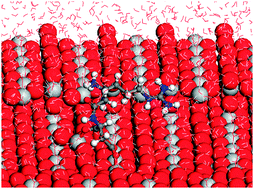RGDtripeptide onto perfect and grooved rutile surfaces in aqueous solution: adsorption behaviors and dynamics†
Abstract
Molecular dynamics (MD) simulations were performed to investigate the adsorption behavior and dynamics of

* Corresponding authors
a
Center for Precision Engineering, Harbin Institute of Technology, P.O. Box 413, Harbin 150001, P.R. China
E-mail:
wuchunya1982@163.com
Fax: +86 (0)451 86415244
Tel: +86(0) 451 86403252
Molecular dynamics (MD) simulations were performed to investigate the adsorption behavior and dynamics of

 Please wait while we load your content...
Something went wrong. Try again?
Please wait while we load your content...
Something went wrong. Try again?
M. Chen, C. Wu, D. Song and K. Li, Phys. Chem. Chem. Phys., 2010, 12, 406 DOI: 10.1039/B917919D
To request permission to reproduce material from this article, please go to the Copyright Clearance Center request page.
If you are an author contributing to an RSC publication, you do not need to request permission provided correct acknowledgement is given.
If you are the author of this article, you do not need to request permission to reproduce figures and diagrams provided correct acknowledgement is given. If you want to reproduce the whole article in a third-party publication (excluding your thesis/dissertation for which permission is not required) please go to the Copyright Clearance Center request page.
Read more about how to correctly acknowledge RSC content.
 Fetching data from CrossRef.
Fetching data from CrossRef.
This may take some time to load.
Loading related content
